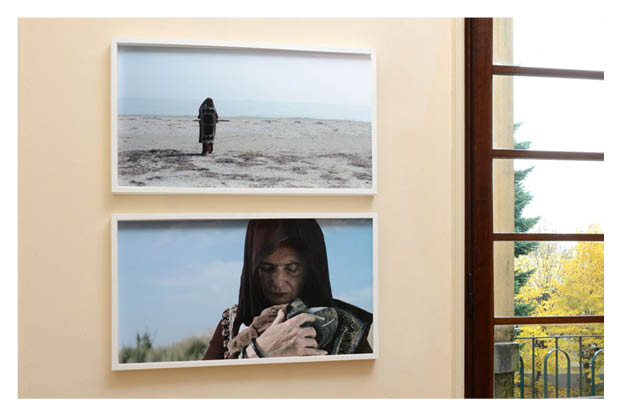Pietas arises from a desire to rewrite the myth of Medea, as told by Euripides, in a more real form, in which the events lose the aura and rigidity imposed by the myth, becoming humanized and updated to our own times. In Elisabetta Di Sopra’s work, Medea is no longer the mother who taints herself with the crime of the children to whom she gave birth from her own womb, but is the victim of the violence of our own times. Disoriented and stupefied by grief, she weeps for the children whose destiny she does not know, and of whom she desperately seeks a trace, some minimal sign that might indicate they are still alive. On a desolate beach (from which we see, anachronistically, the presence of large ships furrowing the sea), Medea, now old and no longer lucid, digs and takes to herself a scarf, a tee-shirt, some trousers, thrown up by the sea, emblems of an absence that cannot be restored. Her figure conserves echoes of Pasolini in her clothing, in her movements and in her restrained, almost hieratic desperation, for which it seems there can be no peace. Pietas is a reflection on the drama of contemporary immigration, on mothers who do not know the fate of their children and on the negated hopes of a better future, against which have dashed so many lives that must cross seas, climb walls, scale mountains or frontiers. The aged mother is thus doubly punished by destiny, with her grief and a bitter, infinite solitude.


